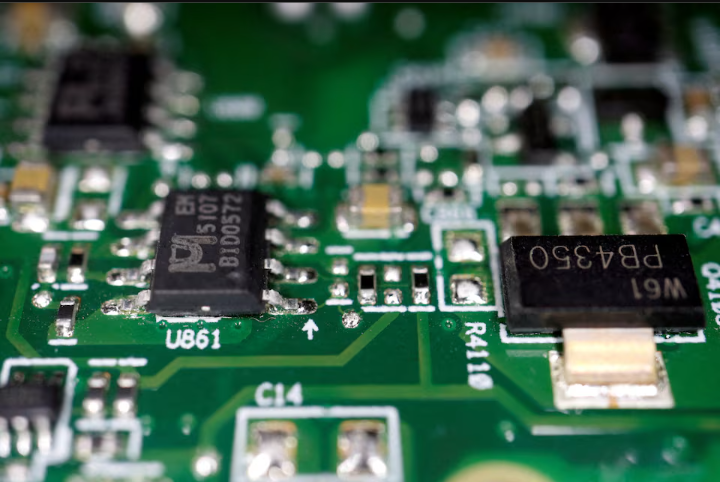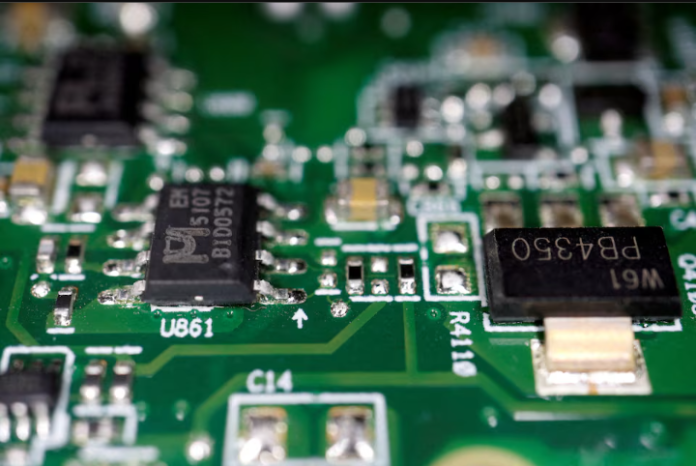Taiwan has long been a dominant force in the semiconductor industry, particularly in the production of legacy chips—mature node semiconductors used in cars, display panels, and various consumer electronics. However, Chinese foundries, backed by strong government support, are rapidly gaining ground, threatening Taiwan’s long-held market leadership.
The Rise of China’s Legacy Chip Industry
In 2015, Taiwan’s Powerchip Technology entered a partnership with the Chinese city of Hefei to establish a chip foundry, Nexchip. Initially seen as an opportunity to access the booming Chinese market, the deal has now backfired. Nexchip has evolved into a formidable competitor, aggressively cutting prices and expanding capacity to capture a larger share of the legacy chip industry.
Chinese foundries like Hua Hong and SMIC have also intensified their efforts, leveraging substantial financial support from Beijing and adopting lower profit margins to undercut Taiwanese manufacturers. As a result, Taiwan’s leading semiconductor companies—Powerchip, UMC, and Vanguard International—are facing mounting pressure.
Taiwan’s Response: A Shift to Advanced Chip Technologies
With Chinese manufacturers flooding the market with cheaper legacy chips, Taiwanese firms are being forced to adapt. Many are shifting their focus to more advanced and specialized semiconductor technologies.
Powerchip’s chairman, Frank Huang, acknowledges the growing threat from China, stating that Taiwanese foundries must innovate or risk being overtaken. His company is now pivoting towards 3D stacking technology, which integrates logic and memory chips to enhance computing performance and energy efficiency.
Similarly, UMC has partnered with Intel to develop next-generation semiconductor technologies, aiming to reduce reliance on legacy chips.
Global Trade Tensions and the ‘Trump Effect’
The geopolitical landscape is also shaping Taiwan’s semiconductor future. Amid escalating trade tensions between the U.S. and China, Washington has taken steps to curb Beijing’s semiconductor ambitions. This could provide some relief to Taiwanese chipmakers, as companies seeking to diversify supply chains may prefer Taiwan over China.
Former U.S. President Donald Trump has even proposed imposing tariffs of up to 100% on semiconductors made outside the United States, adding another layer of complexity to the industry’s future.
China’s Market Share is Growing Rapidly
Despite Taiwan’s efforts to pivot towards advanced technologies, China’s growth in the legacy chip industry remains undeniable. According to TrendForce, China’s share of global mature node manufacturing capacity reached 34% in 2024, while Taiwan’s stood at 43%. However, by 2027, China is projected to overtake Taiwan, leaving South Korea and the U.S. trailing behind with single-digit market shares.
SEMI, a leading industry consultancy, has forecasted that 57 out of 97 new semiconductor fabrication plants opening between 2023 and 2025 will be based in China. This aggressive expansion suggests that Chinese companies will continue to challenge Taiwanese dominance in the coming years.
What Lies Ahead for Taiwan’s Chip Industry?

As China’s semiconductor industry continues to expand, Taiwanese chipmakers must find new ways to stay competitive. While process stability and better production yield rates still give Taiwan an edge, Chinese foundries are becoming increasingly aggressive in securing business deals.
Many Chinese customers are now requesting that chip designers use domestic manufacturing facilities to align with Beijing’s push for localized supply chains. Additionally, major Chinese telecom firms like China Mobile and China Telecom have started enforcing stricter requirements for sourcing China-made components.
Taiwanese companies are now faced with a crucial decision: either exit the legacy chip market entirely or focus on technological advancements to maintain their global relevance. As Powerchip’s chairman Frank Huang put it, “For chips that will be used in China, we won’t be able to do the business… We must exit; otherwise, there’s no way to survive.”
With the semiconductor industry undergoing rapid transformations, Taiwan’s ability to innovate and diversify will determine its future standing in the global market.



